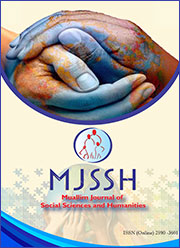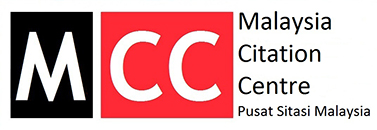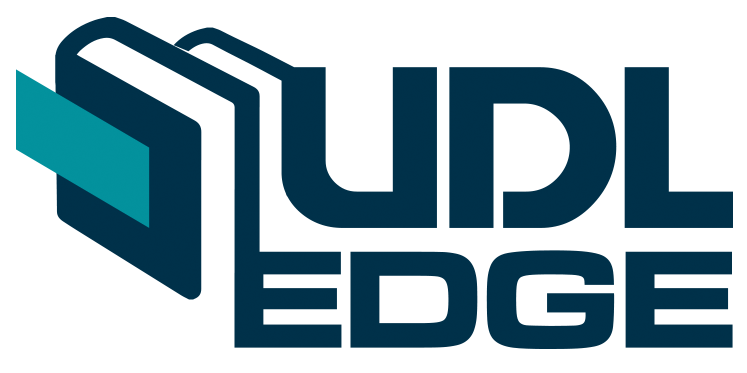Communication for digital leadership: an exploration to the factors that contribute to low index
Keywords:
Digital leadership, communication, interview, teachers, indexAbstract
Digital leadership is important today because leadership development is a key element of sustainability education. To achieve the Sustainable Development Goals (SDGs), leaders should deploy resources, be visionary and ethical, and focus on long-term goals without neglecting values and principles. There are nine elements to assess the digital leadership of teachers. One of the crucial elements in digital leadership of teachers is communication. However, previous studies show that communication has a low index in digital leadership compared to the other elements. Therefore, this study aims to explore the factors that contribute to a low index of communication in digital leadership. In this paper, a qualitative approach using a semi-structured interview is adopted. The interview protocol consists of basic information about the participants, guidelines for the participants, interview questions, and appreciation for the participants. The interviews were conducted thoroughly, although there was only one interview question. The interviews were conducted online via the Zoom application. The interview participants were selected by using purposive sampling that involved four teachers from primary and secondary schools in Perak, Selangor and Sabah. The data was analysed using thematic analysis. The analysis revealed five factors: inefficient use of communication channels, inappropriate attitude of parents, lack of face-to-face communication, inappropriate teaching methods of teachers and limited internet access. The implications of this study point to the possibility of improving the use of communication channels in an efficient way, improving teaching methods so that students can understand what is being taught by teachers, and improving Internet access to increase the frequency of communication and diversify the methods of online communication between teachers and students. Stakeholders, administration and teachers should be more proactive in seeking solutions to overcome these challenges. It is suggested that a further study on communication in digital leadership be conducted, involving teachers from all states and using a quantitative approach and interviews among teachers in all types of Malaysian schools.
References
Alexandro, R., & Basrowi. (2024). Measuring the Effectiveness of Smart Digital Organizations on Digital Technology Adoption: An Empirical Study of Educational Organizations in Indonesia. International Journal of Data and Network Science, 8(1), 139–150. https://doi.org/10.5267/j.ijdns.2023.10.009
Antonopoulou, H., Halkiopoulos, C., Barlou, O., & Beligiannis, G. N. (2021). Associations between Traditional and Digital Leadership in Academic Environment: During the COVID-19 Pandemic. Emerging Science Journal, 5(4), 405–428. https://doi.org/10.28991/esj-2021-01286
Erhan, T., Uzunbacak, H. H., & Aydin, E. (2022). From Conventional to Digital Leadership: Exploring Digitalization of Leadership and Innovative Work Behavior. Management Research Review, 45(11), 1524–1543. https://doi.org/10.1108/MRR-05-2021-0338
Rahmanitabar, Z., Khorshidi, A., Araghieh, A., Barzegar, N., & Faghiharam, B. (2023). Designing a Digital Leadership Model for Managers in Educational Organizations (Case Study: Islamic Azad University, Tehran Province). International Journal of Innovation Management and Organizational Behavior, 3(4), 1–8.
Antonopoulou, H., Halkiopoulos, C., Barlou, O., & Beligiannis, G. N. (2020). Leadership Types and Digital Leadership in Higher Education: Behavioural Data Analysis from University of Patras in Greece. International Journal of Learning, Teaching and Educational Research, 19(4), 110–129. https://doi.org/10.26803/ijlter.19.4.8
Karakose, T., Kocabas, I., Yirci, R., Papadakis, S., Ozdemir, T. Y., & Demirkol, M. (2022). The Development and Evolution of Digital Leadership: A Bibliometric Mapping Approach-Based Study. Sustainability, 14(23), 1–26. https://doi.org/10.3390/su142316171
Karakose, T., Polat, H., & Papadakis, S. (2021). Examining Teachers’ Perspectives on School Principals’ Digital Leadership Roles and Technology Capabilities during the Covid-19 Pandemic. Sustainability, 13(13448), 1–20. https://doi.org/10.3390/su132313448
Karakose, T., & Tülübaş, T. (2023). Digital Leadership and Sustainable School Improvement—A Conceptual Analysis and Implications for Future Research. Educational Process: International Journal, 12(1), 7–18. https://doi.org/10.22521/edupij.2023.121.1
Tigre, F. B., Curado, C., & Henriques, P. L. (2023). Digital Leadership: A Bibliometric Analysis. Journal of Leadership & Organizational Studies, 30(1), 40–70. https://doi.org/10.1177/15480518221123132
Tigre, F. B., Henriques, P. L., & Curado, C. (2024). The Digital Leadership Emerging Construct: A Multi-Method Approach. Management Review Quarterly, 1–48. https://doi.org/10.1007/s11301-023-00395-9
Shin, J. K., Mollah, M. A., & Choi, J. (2023). Sustainability and Organizational Performance in South Korea: The Effect of Digital Leadership on Digital Culture and Employees’ Digital Capabilities. Sustainability, 15(3), 2027–2041. https://doi.org/10.3390/su15107875
Turyadi, I., Zulkifli, Tawil, M. R., Ali, H., & Abdurrahman, S. (2023). The Role of Digital Leadership in Organizations to Improve Employee Performance and Business Success. Jurnal Ekonomi, 12(2), 1671–1677.
BarNir, A., Gallaugher, J. M., & Auger, P. (2003). Business Process Digitization, Strategy, and the Impact of Firm Age and Size: The Case of the Magazine Publishing Industry. Journal of Business Venturing, 18(6), 789–814. https://doi.org/10.1016/S0883-9026(03)00030-2
Gilli, K., Lettner, N., & Guettel, W. (2023). The Future of Leadership: New Digital Skills or Old Analog Virtues? Journal of Business Strategy, 44, 1–7. https://doi.org/10.1108/JBS-06-2022-0093
Hadi, S., Setiawati, L., Kirana, K. C., Lada, S., & Rahmawati, C. H. T. (2024). The Effect of Digital Leadership and Organizational Support on Innovative Work Behavior: The Mediating Role of Emotional Intelligence. Quality - Access to Success, 25(199), 74–83. https://doi.org/10.47750/QAS/25.199.09
HosseiniNasab, S. M., ShamiZanjani, M., & Gholipor, A. (2021). Defining a Framework for Chief Digital Officer Duties as Digital Transformation Governor in Organizations. Journal of Human Resource Management, 11(1), 1–25. https://doi.org/10.22034/JHRS.2021.130495
Kayworth, T. R., & Leidner, D. E. (2002). Leadership Effectiveness in Global Virtual Teams. Journal of Management Information Systems, 18(3), 7–40. https://doi.org/10.1080/07421222.2002.11045697
Obadimeji, C. C., & Oredein, A. O. (2022). Digital Leadership and Communication Styles on Public Primary School Teachers Job Performance in Nigeria. Science Journal of Education, 10(1), 1–11. https://doi.org/10.11648/j.sjedu.20221001.11
Saraih, E. F., Wong, S. L., Asimiran, S., & Khambari, M. N. M. (2022). Contemporary Communication Conduit among Exemplar School Principals in Malaysian Schools. Research and Practice in Technology Enhanced Learning, 17(4), 1–23. https://doi.org/10.1186/s41039-022-00179-x
Burns, H., Vaught, H. D., & Bauman, C. (2015). Leadership for Sustainability: Theoretical Foundations and Pedagogical Practices that Foster Change. International Journal of Leadership Studies, 9(1), 88–100. Retrieved from https://web.a.ebscohost.com/ehost/detail/detail?vid=2&sid=b3d04cbb-a0d5-4ddb-ae2c-a4faf4d00cf6%40sdc-v-sessmgr02&bdata=JnNpdGU9ZWhvc3QtbGl2ZSZzY29wZT1zaXRl#AN=112988069&db=bsu
Sifat, R. I. (2019). Role of Leadership for Achieving Sustainable Development Goals. GIS Business, 14(3), 5–14. https://doi.org/10.26643/gis.v14i3.1944
Ugwu, C. N., & Eze Val, H. U. (2023). International Digital Organization for Scientific Research IDOSR. IDOSR Journal of Science and Technology, 8(1), 20–35. Retrieved from www.idosr.orgAsuketal
Ahumada-Newhart, V., & Eccles, J. S. (2020). A Theoretical and Qualitative Approach to Evaluating Children’s Robot-Mediated Levels of Presence. Technology, Mind, and Behavior, 1(1), 1–13. https://doi.org/10.1037/tmb0000007
Gascón, J., Solà, C., & Larrea-Killinger, C. (2022). A Qualitative Approach to Food Loss. The Case of the Production of Fruit in Lleida (Catalonia, Spain). Agroecology and Sustainable Food Systems, 46(5), 736–757. https://doi.org/10.1080/21683565.2022.2061099
Bekele, W. B., & Ago, F. Y. (2022). Sample Size for Interview in Qualitative Research in Social Sciences: A Guide to Novice Researchers. Research in Educational Policy and Management, 4(1), 42–50. https://doi.org/10.46303/repam.2022.3
Vasileiou, K., Barnett, J., Thorpe, S., & Young, T. (2018). Characterising and Justifying Sample Size Sufficiency in Interview-Based Studies: Systematic Analysis of Qualitative Health Research Over a 15-year Period. BMC Medical Research Methodology, 18(148), 1–18.
Cobern, W. W., & Adams, B. A. J. (2020). When Interviewing: How Many is Enough? International Journal of Assessment Tools in Education, 7(1), 73–79. https://doi.org/10.21449/ijate.693217
Jacob, S. A., & Furgerson, S. P. (2012). Writing Interview Protocols and Conducting Interviews: Tips for Students New to the Field of Qualitative Research. The Qualitative Report, 17(6), 1–10. https://doi.org/10.1016/0168-1702(91)90033-R
Braun, V., & Clarke, V. (2006). Using Thematic Analysis in Psychology. Qualitative Research in Psychology, 3(2), 77–101. Retrieved from http://dx.doi.org/10.1191/1478088706qp063oa
Lochmiller, C. R. (2021). Conducting Thematic Analysis with Qualitative Data. Qualitative Report, 26(6), 2029–2044. https://doi.org/10.46743/2160-3715/2021.5008
Jelani, F., & Nordin, N. S. (2019). Barriers to Effective Communication at the Workplace. International Journal of Modern Languages and Applied Linguistics, 3(2), 7–18.
Albalawi, H., & Nadeem, M. (2020). Exploring the Impact of Ineffective Formal Communication between Teachers and Students: A Case Study of Mustaqbal University and Jubail University College, Kingdom of Saudi Arabia. English Language Teaching, 13(3), 68–76. https://doi.org/10.5539/elt.v13n3p68
Musheke, M. M., & Phiri, J. (2021). The Effects of Effective Communication on Organizational Performance Based on the Systems Theory. Open Journal of Business and Management, 9(2), 659–671. https://doi.org/10.4236/ojbm.2021.92034
The Economist Intelligence Unit. (2018). Communication Barriers in the Modern Workplace. London.
Mailabari, H. K. (2014). Assessment of Barriers To Communication In The Nigerian Construction Industry (Master's thesis, Ahmadu Bello University Zaria). Retrieved from https://kubanni.abu.edu.ng/items/82e26ba6-3320-4e2b-9164-21d941328f6f/full
Gamil, Y., & Abdul Rahman, I. (2017). Identification of Causes and Effects of Poor Communication in Construction Industry: A Theoretical Review. Emerging Science Journal, 1(4), 239–247. https://doi.org/10.28991/ijse-01121
Şengönül, T. (2021). The Adverse Role of Poverty in the Socialization Processes in the Family and in the Cognitive Development of Children and School Performance. Pegem Journal of Education and Instruction, 11(2), 1–13. https://doi.org/10.14527/pegegog.2021.00
Lareau, A. (2003). Unequal Childhoods: Class, Race, and Family Life. Berkeley: University of California Press.
Sénéchal, M., & LeFevre, J. A. (2002). Parental Involvement in the Development of Children’s Reading Skill: A Five-Year Longitudinal Study. Child Development, 73(2), 445–460. https://doi.org/10.1111/1467-8624.00417
Sylaj, V., & Sylaj, A. K. (2020). Parents and Teachers’ Attitudes Toward Written Communication and Its Impact in the Collaboration Between Them: Problem of Social Study Education. Journal of Social Studies Education Research, 11(1), 104–126.
Kocyigit, S. (2015). Family Involvement in Preschool Education: Rationale, Problems and Solutions for the Participants. Educational Sciences: Theory and Practice, 15(1), 141–157. https://doi.org/10.12738/estp.2015.1.2474
Epstein, N. B., Ryan, C. E., Bishop, D. S., Miller, I. W., & Keitner, G. I. (1993). The McMaster Model View of Healthy Family Functioning. In F. Walsh (Ed.), Normal Family Processes (pp. 138–160). New York/London: The Guilford Press.
Martin, E. J., & Hagan-burke, S. (2002). Establishing a Home-School Connection: Strengthening the Partnership Between Families and Schools. Preventing School Failure: Alternative Education for Children and Youth, 46(2), 62–65. https://doi.org/10.1080/10459880209603347
Dinnebeil, L. A., Hale, L. M., & Rule, S. (1996). A Qualitative Analysis of Parents’ and Service Coordinators’ Descriptions of Variables That Influence Collaborative Relationships. Topics in Early Childhood Special Education, 16(3), 322–347. https://doi.org/10.1177/027112149601600305
Cankar, F., Deutsch, T., & Sentočnik, S. (2012). Approaches to Building Teacher-Parent Cooperation. Center for Educational Policy Studies Journal, 2(1), 35–55.
Owens, E. S., McPharlin, F. W. H., Brooks, N., & Fritzon, K. (2018). The Effects of Empathy, Emotional Intelligence and Psychopathy on Interpersonal Interactions. Psychiatry, Psychology and Law, 25(1), 1–18. https://doi.org/10.1080/13218719.2017.1347936
Malle, B. F., & Scheutz, M. (2014). Moral Competence in Social Robots. 2014 IEEE International Symposium on Ethics in Science, Technology and Engineering. Chicago: IEEE.
Mheidly, N., Fares, M. Y., Zalzale, H., & Fares, J. (2020). Effect of Face Masks on Interpersonal Communication During the COVID-19 Pandemic. Frontiers in Public Health, 8(582191), 1–6. https://doi.org/10.3389/fpubh.2020.582191
Lee, S. J. (2009). Online Communication and Adolescent Social Ties: Who Benefits more from Internet Use? Journal of Computer-Mediated Communication, 14(3), 509–531. https://doi.org/10.1111/j.1083-6101.2009.01451.x
Newman, S. A., & Ford, R. C. (2021). Five Steps to Leading Your Team in the Virtual COVID-19 Workplace. Organizational Dynamics, 50(1), 1–11. https://doi.org/10.1016/j.orgdyn.2020.100802
Stadler-Heer, S. (2019). Inclusion. ELT Journal, 73(2), 219–222. https://doi.org/10.1093/elt/ccz004
Hills, D. C., & Sessoms-Penny, S. (2021). Pre-Service Professional Development for Inclusion Teachers. Research in Higher Education Journal, 40, 1–17. Retrieved from https://eric.ed.gov/?id=EJ1296461
Deeley, S. J. (2018). Using Technology to Facilitate Effective Assessment for Learning and Feedback in Higher Education. Assessment and Evaluation in Higher Education, 43(3), 439–448. https://doi.org/10.1080/02602938.2017.1356906
Szymkowiak, A., Melović, B., Dabić, M., Jeganathan, K., & Kundi, G. S. (2021). Information Technology and Gen Z: The Role of Teachers, the Internet, and Technology in the Education of Young People. Technology in Society, 65(101565), 1–10. https://doi.org/10.1016/j.techsoc.2021.101565
Mirsharapovna, S. Z., Shadjalilovna, S. M., Kakhramonovich, A. A., & Malikovna, K. R. (2022). Pros and Cons of Computer Technologies in Education. Texas Journal of Multidisciplinary Studies, 14, 26–29. Retrieved from https://doi.org/10.17605/OSF.IO/FP5M7
Hutchison, K., Paatsch, L., & Cloonan, A. (2020). Reshaping Home–School Connections in the Digital Age: Challenges for Teachers and Parents. E-Learning and Digital Media, 17(2), 167–182. https://doi.org/10.1177/2042753019899527
La Hanisi, A., Risdiany, R., Dwi Utami, Y., & Sulisworo, D. (2018). The Use of WhatsApp in Collaborative Learning to Improve English Teaching and Learning Process. International Journal of Research Studies in Educational Technology, 7(1), 29–35. https://doi.org/10.5861/ijrset.2018.3004
Putra, M. Y. R. F., & Inayati, D. (2021). The Teaching of English by Using Telegram Application: A Case Study at SMKN (Vocational High School) 4 Malang. Journal of Education of English as a Foreign Language, 4(2), 92–108. https://doi.org/10.21776/ub.educafl.2021.004.02.06
Cheung, D. (2018). The Key Factors Affecting Students’ Individual Interest in School Science Lessons. International Journal of Science Education, 40(1), 1–23. https://doi.org/10.1080/09500693.2017.1362711
Kayalar, F., & Ari, T. G. (2017). Study Into the Views of Classroom Teachers Upon Interest-Based Learning in Primary Schools. International Journal Of Turkish Literature Culture Education, 6(4), 2776–2787. https://doi.org/10.7884/teke.4053
Lin, S. H., & Huang, Y. C. (2016). Examining Charisma in Relation to Students’ Interest in Learning. Active Learning in Higher Education, 17(2), 139–151. https://doi.org/10.1177/1469787416637481
Jamilah, & Isnani, G. (2017). The Influence of Classroom Climate, Learning Interest, Learning Discipline and Learning Motivation to Learning Outcomes on Productive Subjects. Jurnal Pendidikan Bisnis Dan Manajemen, 3(2), 85–96. https://doi.org/10.17977/um003v3i22017p085
Published
 Abstract Display: 59
Abstract Display: 59  PDF Downloads: 39
PDF Downloads: 39 













 This work is licensed under a
This work is licensed under a